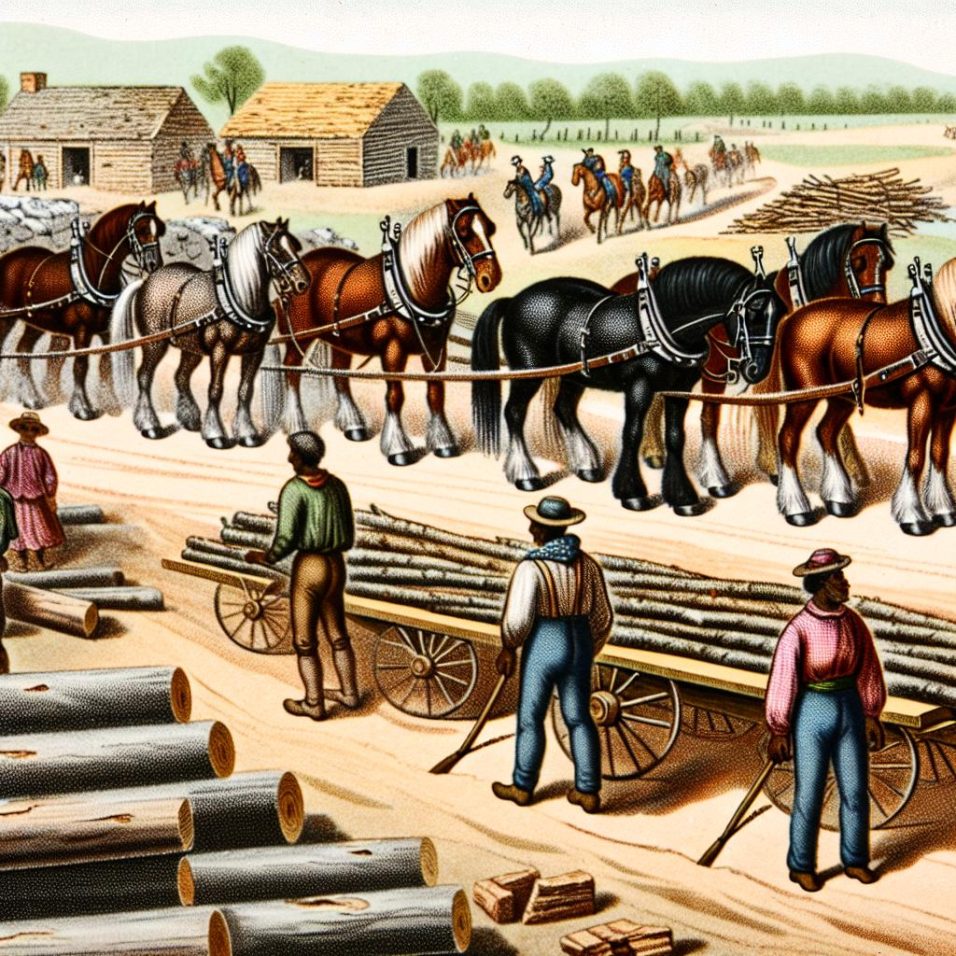The Role of Horses in Virginia’s Early Transportation
In the formative years of Virginia, horses emerged as a linchpin in the development of the region’s nascent infrastructure. Long before the advent of automobiles and railways reshaped transportation landscapes, horses were the principal means of mobility and labor. Their utilization had far-reaching implications for the establishment of roads and pathways that crisscrossed the state, fostering connections and nurturing economic growth.
Development of Road Networks
As settlers began laying the foundations of communities throughout Virginia, the need for dependable routes became increasingly evident. These routes were essential for facilitating trade and sustaining communication between distant settlements. Horses were indispensable in this enterprise, not merely as a mode of transport but as active participants in the road construction process. Harnessing the strength and endurance of horses, materials were transported to sites where pathways were carved out. This network of roads was vital in linking the often-isolated rural areas with the burgeoning urban centers, creating arteries of commerce and communication.
Impact on Commerce
The transportation capabilities provided by horses ushered in a new era of commercial activity. Their contribution to transport allowed for the efficient movement of goods among farmers, traders, and markets. As goods became more accessible, economic growth ensued, paving the way for the creation of more structured and dynamic marketplaces. Such marketplaces were integral to the economic ecosystem, ensuring the flow of goods and capital, which was crucial for Virginia’s economic maturement.
Horses and Agricultural Development
Beyond their role in transportation, horses were fundamental in bolstering agriculture— the backbone of Virginia’s economy. In agricultural fields, horses were employed for an array of tasks, from plowing to hauling produce. Their involvement led to significant improvements in agricultural productivity, as manpower alone could not achieve the same levels of efficiency and output. The boost in agriculture was symbiotic with infrastructure enhancements; as productivity increased, so did the need for improved roads to transport the burgeoning output to diverse markets.
Influence on Urban Planning
The influence of horses extended beyond rural landscapes to urban centers, where they played a key role in shaping urban planning. Cities and towns had to accommodate horse-driven conveyances, necessitating the construction of facilities such as stables, carriage houses, and water troughs. This adaptation had a lasting impact on the architectural and spatial organization of urban areas, influencing decisions that would echo into the future.
Expansion of Mail Delivery
Horses also played a critical role in the expansion of mail delivery systems, which were vital for communication across Virginia’s expansive rural landscapes. Efficient postal services were essential not only for personal correspondence but also for governmental operations, necessitating the establishment of a robust network of roads. As mail delivery services expanded and improved, the demand for better roads grew, further spurring infrastructure development across the region.
Technological Transition
The transition from reliance on horse-driven transport to the embrace of mechanized vehicles was a gradual process. Despite the rise of trains and cars, horses continued to be an important mode of transport, coexisting alongside these new technologies. During this period of transition, early infrastructure planning drew upon lessons learned from horse-driven logistics, which fostered an adaptive environment capable of accommodating larger, mechanized modes of transport.
The historical significance of horses in Virginia highlights their role as more than just beasts of burden. Horses were key players in the evolution of a complex and advanced transportation infrastructure. Their contributions provided essential foundations upon which subsequent advancements were made. Understanding this period in Virginia’s history allows for a richer comprehension of the social and economic fabric of the region.
In conclusion, while horses may have gradually ceded their transport dominance to mechanized alternatives, their legacy remains indelible in the fabric of Virginia’s history. The stories of these stalwart animals underscore an era when transportation prowess relied on natural power, shaping a landscape that would eventually transition into one defined by technological prowess. To further explore the intriguing history of transportation, consider delving into additional resources offered by reliable historical and transportation-focused entities.


